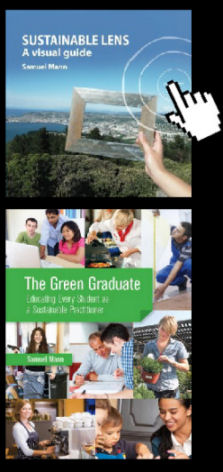I’ve been thinking about reactions to the Story of Stuff. Lots of people loved it. People around here are busily organising video evenings for their kindergartens and others are suggesting that it be made compulsory viewing for all staff and students. Another group of people hate it. Despite what the former may think, many of these haters are committed environmentalists.
Dave commented in response to an earlier post:
yes it lost me at the first step is “extraction = x = trashing the planet”. It’s got all of the P’s – pretentious, preaching, propaganda. It is simplistic in the extreme and carries all of the typical green “anti-successful business” attitude which just makes me hit the red X
It embodies FUD
I can see this appealing to the sustainability evangelists giving a self-righteous boost but the unconvinced in this century require more than this kind of poster style argument.
and on a work list:
You’d need to be careful that both your credibility and the message don’t suffer. There are many things in the video that are just plain false.
It would be good to present to a communications class as a way of showing how you can take myths and half-truths, apply them to a populist argument, and get away with it very well. But if you are trying to present sustainability then the falsehoods and obvious spin will probably result in some students adjusting their view of your credibility, and then taking the message with a grain of salt – perhaps even dismissing it as the fad de jure.
It is useful for critiquing communication and raising awareness that there’s a lot of very slick snake-oil salesmen out there – but it may backfire in a sustainability class when you actually want to get the message across and have students accept it.
This is an important debate. Here’s the question: how can we present the message when we have such different starting points and the very thing that motivates some antagonises others.
There are several sub questions here
1. Do we have any idea of the distribution of different attitudes?
2. How might we expect those segments of the population/class to respond to different approaches?
3. What is a sensible teaching model that address these different attitudes?
Clearly, not lying is a start. Is there a role for shocking people to get their attention (there is much in the museum literature about carefully managing comfort zones).

leighblackall
January 17, 2008
hmm, both quotes come from the same guy Samuel, can you find more diversity in the haters? Here’s a link to a blog of one voice that is in my opinion being more constructive than your guy.. and he links out to some interesting reading that make for good inquiry learning resources…
Inquiry learning is the model (as always) the video is a stimulus for the lovers and the haters to discuss and find info for each other. That’s exactly what is happening in the email forum you quote from, and people are learning well beyond the content of that video – but it was the video that brought the lurking hater out and generated the necessary debate and discussion that inevitably lead to learning wouldn’t you say? And it still goes on through your blog.. pretty useful video I would say. And in that email forum I think there is the beginnings of the data that answers your questions, if only we could draw out more lurkers.
So, scale the inquiry model being informally practiced at time in the email forum, and implement it in the real world. To think that Polytech teachers would go and organise a film night without organising follow up inquiry activities is not respecting their skills as educators – this disrespect certainly comes across in the hater’s dismissive remarks (which you seem to pick up on by attributing such an extreme label as hater). The website for the video provides some resources for people wanting to organise a film night and further inquiry. Indeed it is propaganda, necessary propaganda from a scant number that we need to sit up, take notice, stop lurking and engage and discuss and help each other sort out this confusing wash of information and disinformation – we’ve all but given up on our mass media to do it for us…
In the model I proposed for the Polytechnic – which I hope you will critique in your blog some day if you can make sense of the diagram (happy to add more voice to it if you like as I’m sure the people presenting it did a poor job), are notes for this inquiry learning model:: Show the film, turn on the lights, ask the hater to talk – oh, he didn’t show.. oh well, bring up his comments and links like you have done here and try and facilitate an inquiry to balance the film. Its not easy though. The haters can be very destructive in their language, and the responses (such as the language I am using here) can inflame that. But, with the right amount of tolerance and empathy from everyone involved (I’m not in that frame of mind this morning), excellent outcomes can be achieved and all stimulated by films such as these. So I would say, look at this film as a small but significant part in a longer process.